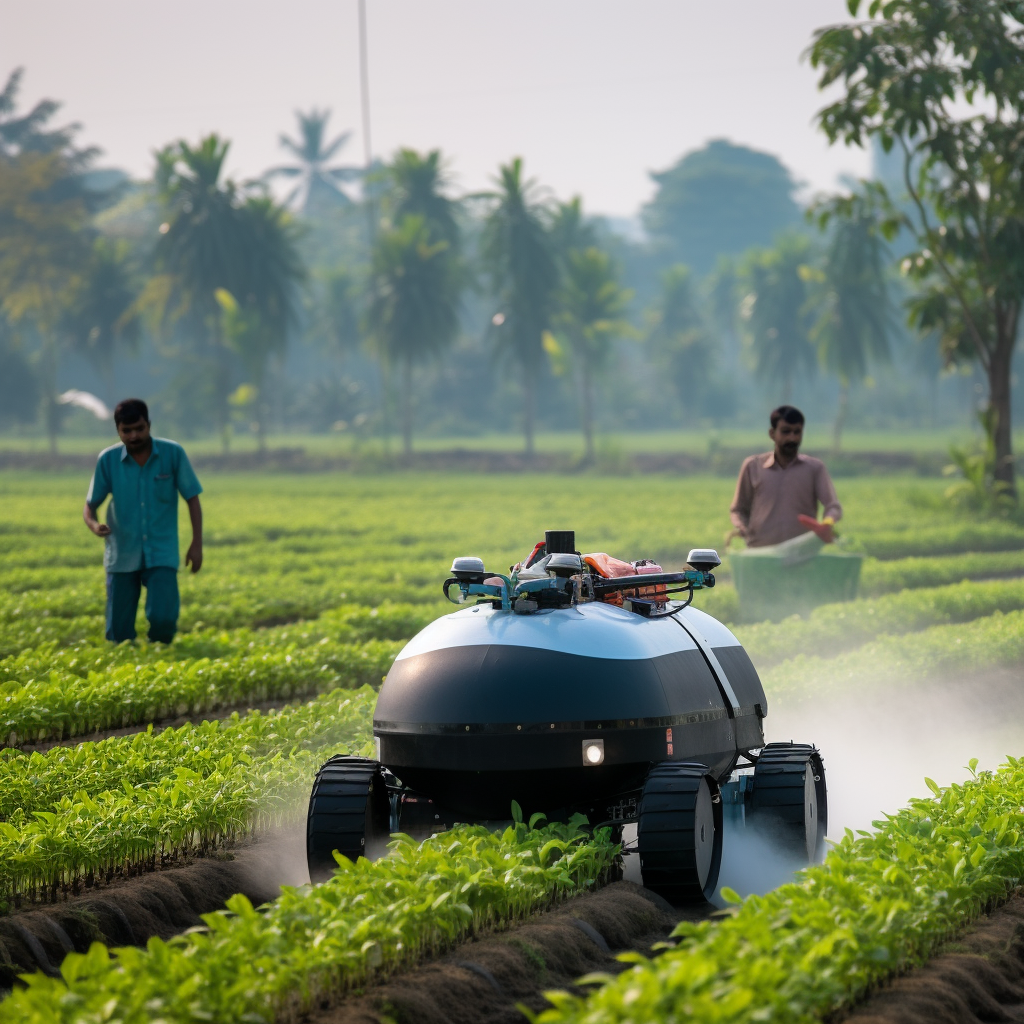India is experiencing an agricultural revolution, and technology is playing a crucial role in this transformation. Let me take you on a journey through the diverse landscapes of India, where young agricultural students like Kavita and Bharthiban are harnessing the power of technology to revolutionize farming practices.
In the northeastern state of Assam, we met Kavita, a bright agriculture student who has mastered the art of reading satellite images and programming drones. With these skills, she can precisely apply fertilizers and pesticides to crops at the right time, ensuring optimal growth. What’s remarkable is that Kavita acquired these skills through remote classes, which she can attend from the comfort of her village home.
Heading south to Tamil Nadu, we encountered Bharthiban, a veterinary medicine student. He shared his excitement about using cattle simulation models to become proficient in artificial insemination. Thanks to the digital platforms provided by his university, Bharthiban can now hone his skills effectively.
India is renowned for its agricultural prowess, producing an abundance of milk, pulses, rice, wheat, fruits, and vegetables. However, to sustain this success, the country needs a large pool of trained agricultural professionals who are well-versed in the latest practices and technology. Unfortunately, there is a significant shortfall in the number of graduates in agriculture and related fields. The World Bank’s National Agriculture Higher Education Project is working closely with the Indian Council of Agricultural Research (ICAR) to bridge this gap.
To equip agricultural universities with world-class standards, the project has introduced over 100 vocational skill-based courses and revamped the curricula of 79 disciplines. These changes aim to make education more contextual, competitive, and relevant in terms of employability. Virtual classrooms have also been established, allowing students to learn from national and international experts and explore places they may never have the opportunity to visit.
Dr. R.C. Agrawal, Deputy Director General of Agriculture Education and National Director of NAHEP, describes this shift as a game-changer. He envisions institutions evolving into multi-disciplinary clusters that offer seamless and integrated professional education.
The impact of these efforts is already evident. The quality of graduates has improved, leading to a rise in their placement rate from 42 percent to over 60 percent. This indicates a growing number of job opportunities in agricultural disciplines.
But the benefits of ICAR’s initiatives extend beyond agriculture. By harnessing data analytics and artificial intelligence, farmers can better adapt to the challenges posed by climate change. Countries like Australia, Israel, the Netherlands, South Korea, and the United States have already embraced agricultural technology, reducing operational costs and promoting sustainable growth.
Embracing the transformative power of technology will revolutionize India’s food production and distribution systems. It will also bring us closer to Prime Minister Narendra Modi’s vision of a digital India, where quality education reaches every corner of the country.
In conclusion, India’s agricultural revolution is gaining momentum, thanks to the integration of technology. Young minds like Kavita and Bharthiban are leading the way, using their skills to drive innovation and sustainability in farming practices. With continued efforts and investments in agricultural education, India is poised to become a global leader in sustainable agriculture. Let’s embrace this green revolution and create a brighter future for our farmers and our nation.

+ There are no comments
Add yours